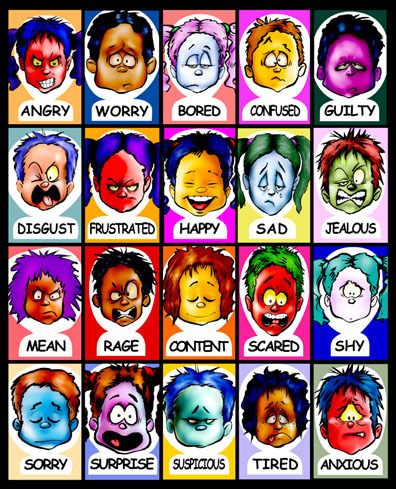All the Feels!: Conveying Character Emotions, Part II
 When I was an undergrad, my coauthor and I jokingly devised the Lee-Cordova Scale of melodrama, based on the behaviour of two of our friends. The namesake of one end of the scale is notably stoic, and in fact once responded to being hit by a car by sitting up and asking if someone minded giving him a lift to the doctor. The namesake of the other end imbues her every experience-- even something as mundane as a trip to the school dining hall-- with emotional drama, and is happy to inform everyone about it.
When I was an undergrad, my coauthor and I jokingly devised the Lee-Cordova Scale of melodrama, based on the behaviour of two of our friends. The namesake of one end of the scale is notably stoic, and in fact once responded to being hit by a car by sitting up and asking if someone minded giving him a lift to the doctor. The namesake of the other end imbues her every experience-- even something as mundane as a trip to the school dining hall-- with emotional drama, and is happy to inform everyone about it. Although these two folks are extreme examples, I'm convinced everyone falls somewhere on the Lee-Cordova scale, and that their relative reactions to various events scale accordingly. For example, someone who responds to being in a road accident by calmly taking notes and photos and asking if everything is okay would be expected to remain equally calm if, say, they have a minor argument with their classmate. Conversely, someone who cries over Taylor Swift songs would be expected to have a full-scale meltdown upon actually being dumped by their significant other.
When a character does something which is wildly out of sync with their location on the Lee-Cordova Scale, there usually needs to be an explanation, even if it's implied or comes at a later time, and there definitely needs to be a reaction from the other characters (even if it's an explanation-- maybe they're not surprised because they knew all along Jim has a rabbit phobia).It's also worth noting that the explanation will have to be better-- both more credible and of greater emotional magnitude-- when the character displays an emotional response to something which is not only unexpected by also deemed socially inappropriate.
Actually, having the other characters react appropriately can make otherwise out-of-character behaviour seem more plausible, and help build up character complexity instead of undermining character development.
Published on August 07, 2013 01:32
No comments have been added yet.



